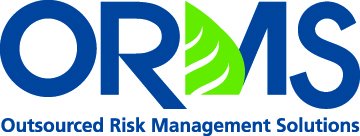Foreclosures are Rising. Is Your Environmental Risk Management Up to the Task?
Risk Management for Today’s Challenges and Tomorrow’s Needs
August 10, 2020New SBA SOP Raises Thresholds and Offers Clarity
November 2, 2020Foreclosures are Rising. Is Your Environmental Risk Management Up to the Task?
As if 2020 hasn’t already been challenging enough, with the COVID-19 pandemic and associated economic downturn lasting far longer than initially projected, new data shows that commercial real estate delinquency and foreclosures are on the rise.
As of September, 5.7% of commercial mortgage loan balances were delinquent, with 3.0% seriously delinquent at 90 or more days. In addition, 278 properties securing commercial mortgage-backed securities, representing nearly $4 billion in loans, were in foreclosure last month, more than double the rate in June.
For loans secured by commercial property, the environmental risk assessment is an important step at origination. But it’s even more critical at foreclosure. Without taking proper precautions, as an owner, the lender can be held liable for cleanup expense.
Key Steps When Pursuing Foreclosure
Fortunately, lenders are generally protected from environmental cleanup liability under the “innocent landowner defense,” as specified in the Comprehensive Environmental Response, Compensation and liability Act (CERCLA) or applicable state-based programs. However, this protection is only valid if the lender performs proper due diligence in accordance with the U.S. Environmental Protection Agency’s All Appropriate Inquiry rule. These due diligence steps are outlined in the latest ASTM standard E1527-13, which is scheduled to be replaced by a new standard (ASTM E1527-21) on January 1, 2021.
It’s important to understand that a transaction screen is NOT considered sufficient due diligence—lenders must perform at least a Phase I environmental site assessment (ESA) to qualify for liability protection. Moreover, even if you conducted proper due diligence at origination, you must repeat these steps at foreclosure to obtain state and federal exemptions.
SBA Provides Thorough Guidelines
For Small Business Administration 7a and 504 loans, lenders must closely follow the SBA’s latest standard operating procedures during foreclosure, or else risk losing their guarantee. These guidelines provide a step-by-step process for liquidation, and also serve as a template for prudent environmental due diligence on any deal.
The current SOP, 50 10 6, was implemented on October 1, 2020 and requires lenders to obtain federal protection against CERCLA. It also requires banks to engage an environmental firm holding adequate errors and omissions insurance coverage.
For SBA loans above $250,000 that are not identified on the list of sensitive industries, lenders must start the due diligence process with a Records Search with Risk Assessment (RSRA). As of 2018, the RSRA must identify property uses back to 1940 or first developed use, whichever is earlier. The current property owner must complete an Environmental Questionnaire on the subject property, as well.
Lastly, when pursuing foreclosure against a commercial property, it’s in your best interest to investigate potential environmental risks that fall outside the scope of CERCLA liability. Depending on the age, condition, and past history of the site, this list of concerns may include items like mold, asbestos, lead paint, vapor intrusion, operations risks and PFAS.
Don’t Go it Alone
When pursuing foreclosure on a commercial property, we advise working with an outside risk management expert who can provide an independent peer review of your Phase I and help guide you through a set of comprehensive environmental due diligence steps.
Working through the foreclosure process on a commercial property is stressful and fraught with potential risks. But there’s no need to go it alone. Set your mind at ease and contact your risk management outsourcing experts at ORMS. Call us at 877.407.ORMS (6767), or send an email to info@orms.com.
